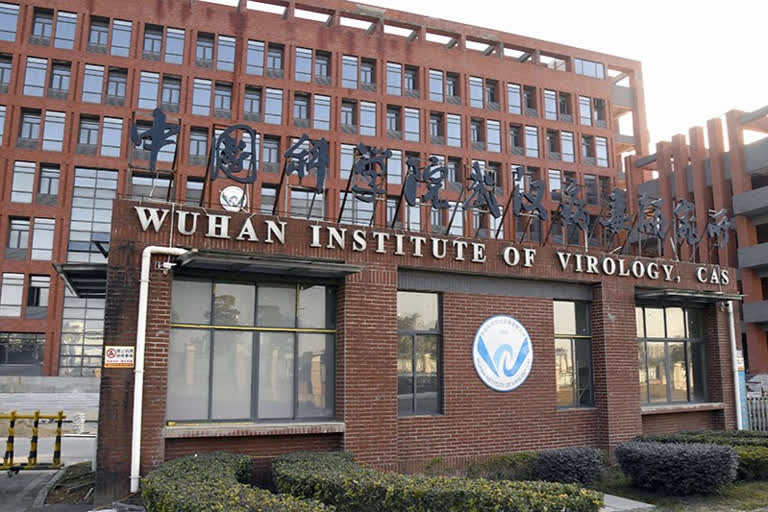Manchester (UK): President Biden has ordered the US intelligence agencies to deepen their investigation of whether the coronavirus emerged naturally from the animal-to-human transmission or leaked accidentally from the Wuhan Institute of Virology.
The lab-leak theory had been floated by President Trump and others in his circle in April last year. It was widely dismissed at the time as an unfounded conspiracy theory with racist undertones. A statement in support of China, signed by prominent scientists, had been published in The Lancet in March 2020 and had cautioned against unfounded speculations about the origins of the virus.
But now the suggestion that the virus leaked from a lab is back on the agenda, with some wondering if the media failed to take the possibility seriously. In addition, Trump and his supporters have been quick to argue that they were right all along and shouldn't have been dismissed. How is it that a hypothesis long rejected as a conspiracy theory has come back around for consideration?
Tarnished by association
As part of our research, my colleagues and I have tracked the spread of pandemic conspiracy theories online over the past 18 months. The theory that the virus was created in a lab was one of the earliest and most popular to emerge. Surveys found that roughly 30% of Americans believed it at certain points. This was despite evidence that the virus did not have any obvious telltale traits of genetic engineering.
Read: 'Biden-Ghani meeting to ensure Afghanistan never again becomes safe haven for terrorists'
But early on in the pandemic, the media didn't always distinguish between the far-fetched speculations that SARS-CoV-2 was created by China as a bioweapon (and then released either accidentally or intentionally) and the more plausible hypothesis that it originated in nature but leaked accidentally from the Wuhan Institute of Virology while being studied. As a result, lab-leak claims, in general, came to be seen as highly questionable.
Additionally, the lab-leak claim very quickly became entangled with other often contradictory theories: that COVID-19 was caused by 5G radiation, or that Bill Gates was using vaccines to implant microchips in people. In online discussions, theories are often mashed together in this way into mega-plots. It's understandable therefore that commentators dismissed the idea.
We also need to consider the political context in which this theory was produced and circulated. The general lab-leak theory, along with hints that the virus might have been designed as a bioweapon, was promoted by Trump, US Senator Tom Cotton, Fox News's Tucker Carlson and Steve Bannon. All had the previous form in using conspiracy rhetoric to blame America's woes on enemies without and within.
Trump, for example, had labelled global warming a hoax perpetrated by China to gain a competitive advantage over the US. And at a press briefing in April 2020, he claimed he had seen classified information indicating that the virus had come from the Wuhan institute. But when asked what the evidence was, he said: I'm not allowed to tell you that.
The insinuation of a vast conspiracy without evidence is a signature Trump move. He was the president who repeatedly cried wolf. And so, again, it's understandable that people were initially sceptical about a slab leak.
Read: Biden to host Israeli Prez in WH on June 28
New year, new evidence?
So why is the theory again back in the limelight? There's not much in the way of new revelations, but there are two potentially significant developments (as detailed in a lengthy article in Vanity Fair) that have caught people's attention. First, there are apparently intelligence reports of several lab workers at the Wuhan Institute of Virology getting sick in November 2019. If true, this would be compelling evidence.
However, we need to exercise some caution here. The claim was first made in an article in the Wall Street Journal based on off-the-record briefings by intelligence officials. Articles featuring similar briefings appeared in the build-up to the Iraq war reporting the supposed existence of weapons of mass destruction, which were never found. This isn't to say that there couldn't be intelligence on a potential slab leak. But we need to be sure we're not being misinformed when considering such sources.
Second, it came to light that Peter Daszak, a key organiser of the March 2020 statement in the Lancet that dismissed the idea of a lab leak, had links to the Wuhan Institute of Virology. Daszak is the head of EcoHealth Alliance, a research organisation that had received US government grants to conduct work with the institute on manipulating viruses.
Some have deemed this conspiratorial. Yet what it reveals isn't really a secret plot to cover up a lab leak, but rather the complexity, self-interest and political messiness that surround international research funding. Daszak's grants to work with the institute were cancelled in April 2020, only to then be reinstated later in the year. His work on the Lancet letter can be seen as part of the story of this US-China collaboration becoming a political football as the pandemic initially unfolded.
This is what we find repeatedly in the world of conspiracy theories: that reality is often as murky as fiction. The investigation of the Kennedy assassination, for example, dismissed conspiracy theories, insisting that the shooting was the result of a lone gunman. However, what this glossed over was the complex story of the Cold War, in which, for example, the US intelligence agencies (urged on by the Kennedy brothers) had engaged in repeated assassination attempts on Fidel Castro.
If we insist on framing events simply in terms of conspiracy or no conspiracy, we will fail to make sense of the more messy ways in which history including global pandemics unfold. As a result, we shouldn't be surprised if theories once dismissed then come back around for discussion.
Read: US Chambers seeks to double H-1B quota
(The Conversation)
(PTI)



